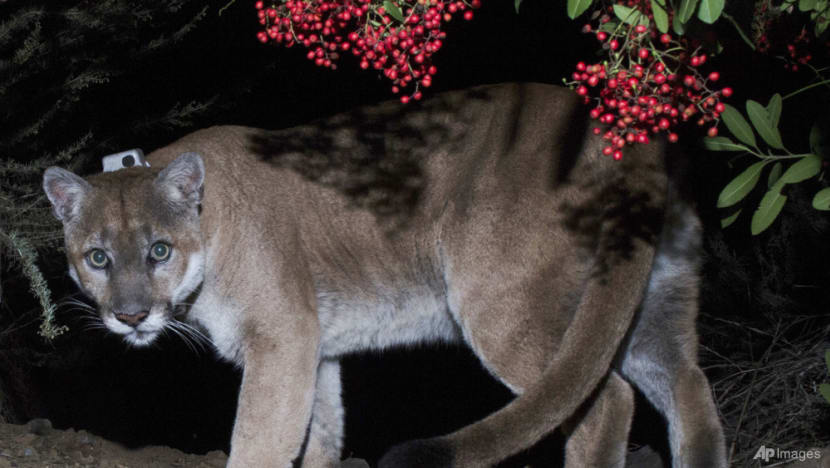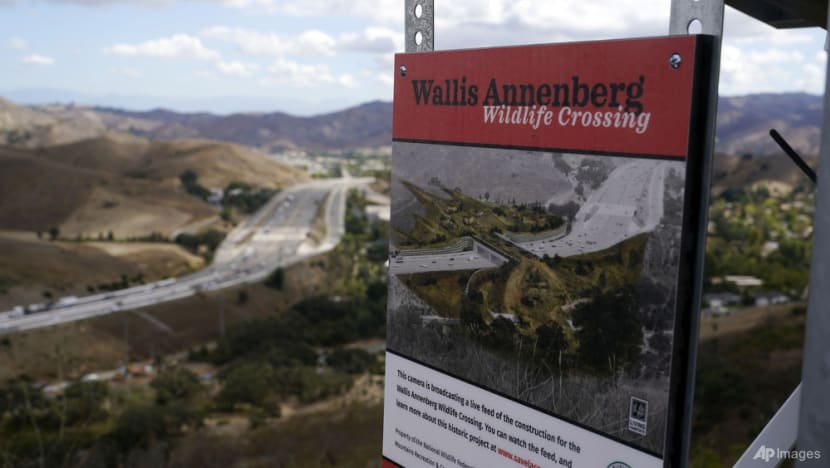A new bridge may save California mountain lions under threat from loss of habitat, wildfires
Squeezed into smaller areas, some of these animals die after they end up roaming just outside of the highly populated city of Los Angeles.


This audio is generated by an AI tool.
WASHINGTON: Mountain lions in California are under threat from problems like wildfires and loss of habitat, and a massive effort is underway to try and keep them out of harm’s way.
Even though they are a protected species, there are now less than 4, 500 mountain lions - also known as cougars or pumas - in the whole of California. Only a dozen are left in the Santa Monica Mountains.
These animals inhabit diverse habitat types across California, including temperate redwood forest, foothills and mountains. But they are losing their habitat as humans encroach on these spaces.
Squeezed into smaller areas, some end up roaming just outside of the highly populated city of Los Angeles. Some are killed by cars on highways as they try to move around.
“So if you're trying to wander to find food or mates or shelter in an area where you have to cross some of the world's busiest freeways, it's not a good scenario,” said Beth Pratt, California regional executive director at the United States’ National Wildlife Federation.
“And indeed, what the National Park Service research over two decades has shown is these guys are going to literally vanish from this landscape if we don't do something.”
TRYING TO SAVE THE MOUNTAIN LIONS
Wildfires are also becoming more frequent in North America due to heat and drought linked to climate change.
US Forest Service data released in June showed that more than 115 million people, which is more than a third of the US population, now live in areas facing high wildfire risk across the country.
Species like mountain lions have died in such fires because they cannot escape the raging heat.
One solution, expected to be the largest wildlife crossing in the world, is on an accelerated timeline.
A 65m bridge funded by both the public and private sectors is being built above the 101-Freeway in Agoura Hills.
The top of the structure will be covered in about half a hectare of native vegetation, including coastal sage scrub and oak savannah. The bridge will allow a wide range of species from monarch butterflies to mountain lions to escape fires, and get from one habitat area to another that would otherwise be cut off.

CONNECTIVITY AS KEY
The bridge has given hope that a fractured biodiversity hotspot is being reconnected.
“I am convinced connectivity is key to climate resiliency, to the biodiversity collapse. We need connected and healthy ecosystems,” said Pratt.
“We used to write off our space. Our human space is appropriate for wildlife. The number one threat to wildlife worldwide is loss of habitat,” she added.
The Wallis Annenberg Wildlife Crossing, named after a philanthropist who helped fund it, cannot come soon enough.
The US Southwest has already had a heatwave in the first week of June, with temperatures topping 43 degrees Celsius, more than four degrees higher than usual.
Things may get worse, with the US National Weather Service warning that summer that is expected to last till September is likely to be hotter than normal.
The northeast of the country is also likely to be drier in many places, increasing the risk of wildfires.

















